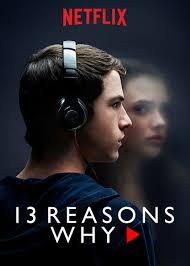In the spirit of MHI week, I’ve decided to explore the show “Thirteen Reasons Why” because of its originality, critical reception, and backlash from viewers. With the first season having aired in early 2017, followed by season two during the spring of 2018, enough time has passed for there to be tangible information regarding the impact the show has on its viewers. So, here we go: 6 reasons why “Thirteen Reasons Why” proves to be a positive and negative representation of mental health for teens.
CAUTION: Spoilers lie ahead.
- The Tapes
Firstly, the lengths and thought process that Hannah went through prior to committing suicide were unrealistic. To break it down, she made 13 tapes in total. Each tape was made for and solely addressed to an individual who influenced her decision to harm herself. Additionally, she had a designated messenger/acquaintance, Tony Padilla, execute her ‘pre-made’ plans for the delivery and circulation of the tapes after her death.
He was aware she was planning on committing suicide before she committed suicide. Although it may just be wishful thinking, I’d like to believe that in a real life, a person in Tony’s place would attempt to help Hannah rather than carrying out her plan.
- Hannah’s Suicide
Plenty of verbal backlash surrounding the show emerges from its gruesome and utterly raw 3-minute scene in which Hannah commits suicide. Many have critiqued the show for ‘glorifying’ suicide while others have suggested the show of attempting to demonstrate the truthful horrors of it.
- Soapy Teen Drama
While the show touches on very serious issues such as sexual and verbal assault, gun violence, and the vast spectrum of mental health issues, it also categorizes under a soapy teen drama.
This includes the cringe-worthy things all (current and ‘once upon a time’) teenagers experience in high school.
- Suicide and Revenge
The depiction of suicide and Hannah’s reasoning for suicide suggests that her ultimate decision was caused by others. It suggests that without her having relations without any of the 13 individuals on the tapes, she’d still be living.
This places massive amounts of guilt on the characters on the tapes (that they should feel regardless) for unethical reasons. She’s practically haunting them from the dead. This leads to suicide contagion within her friend group, a phenomenon that could have been avoided.
- Failure to Educate
The way the show deals with Hannah’s suicide is simply not effective. In scenes prior to her final appearance on screen as a living character, she reaches out for help from the school counselor, Mr.Porter, who clearly was not equipped for the line of work. He swats her away and suggests she ‘deal with her issues face-to-face”. She isn’t advised to call a suicide prevention line or guided by any ‘trusted adult figure’ towards recovery.
When considering viewers, Hannah’s “suicide scene”, if internalized as a glorification of suicide, may serve as a negative ‘how-to’ for viewers struggling with suicidal thoughts.
- Sparked Conversations
Last but not least, the show did an amazing job about sparking conversations about mental health on a global scale.
In summary, with emerging realistic fiction pieces such as “Thirteen Reasons Why” making it to the big screen, it is important to keep in mind that reality is real. The things we read about in books and watch on TV can actually happen to not just us but the individuals around us. Keep your eyes peeled and your ears open.






Be the first to comment on "6 Reasons Why “Thirteen Reasons Why” is Good and Bad"